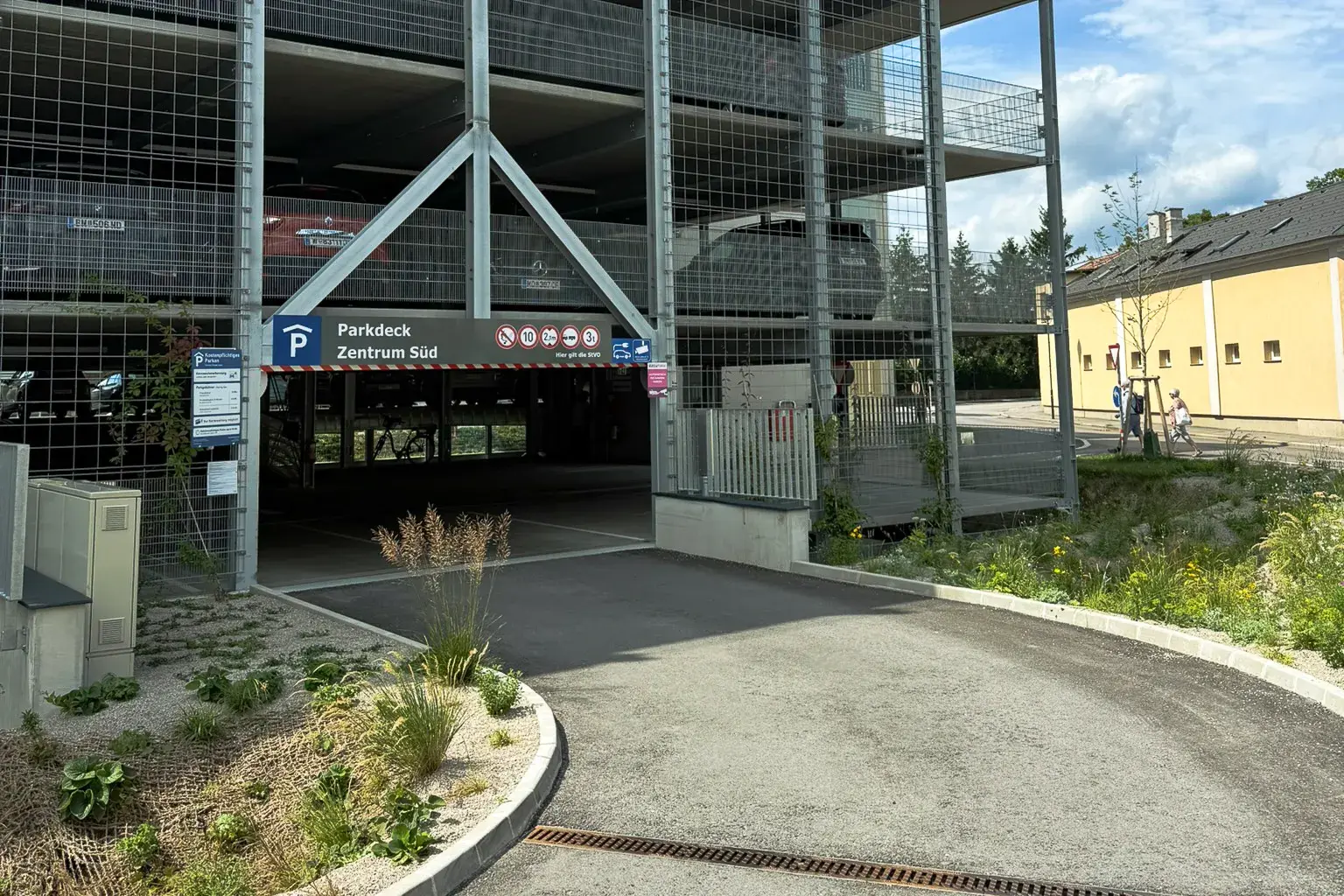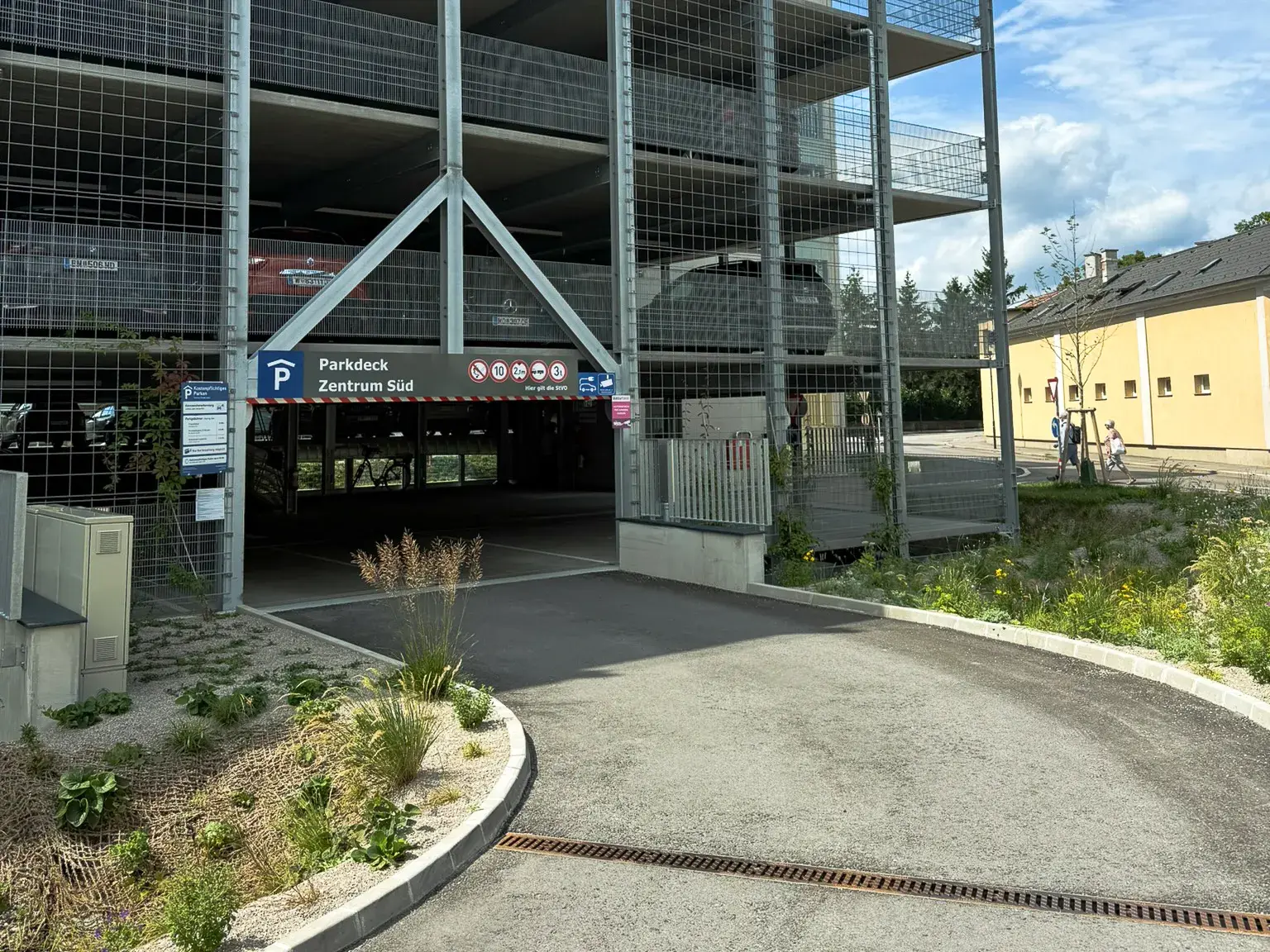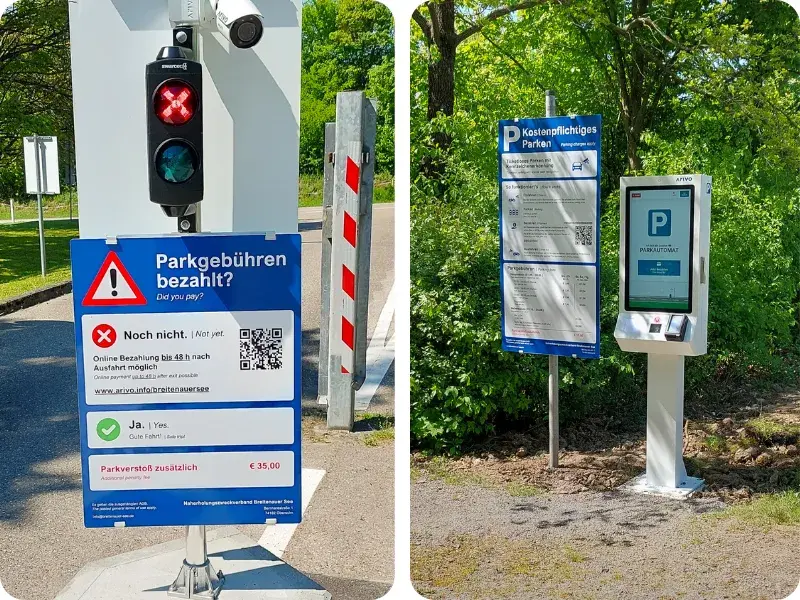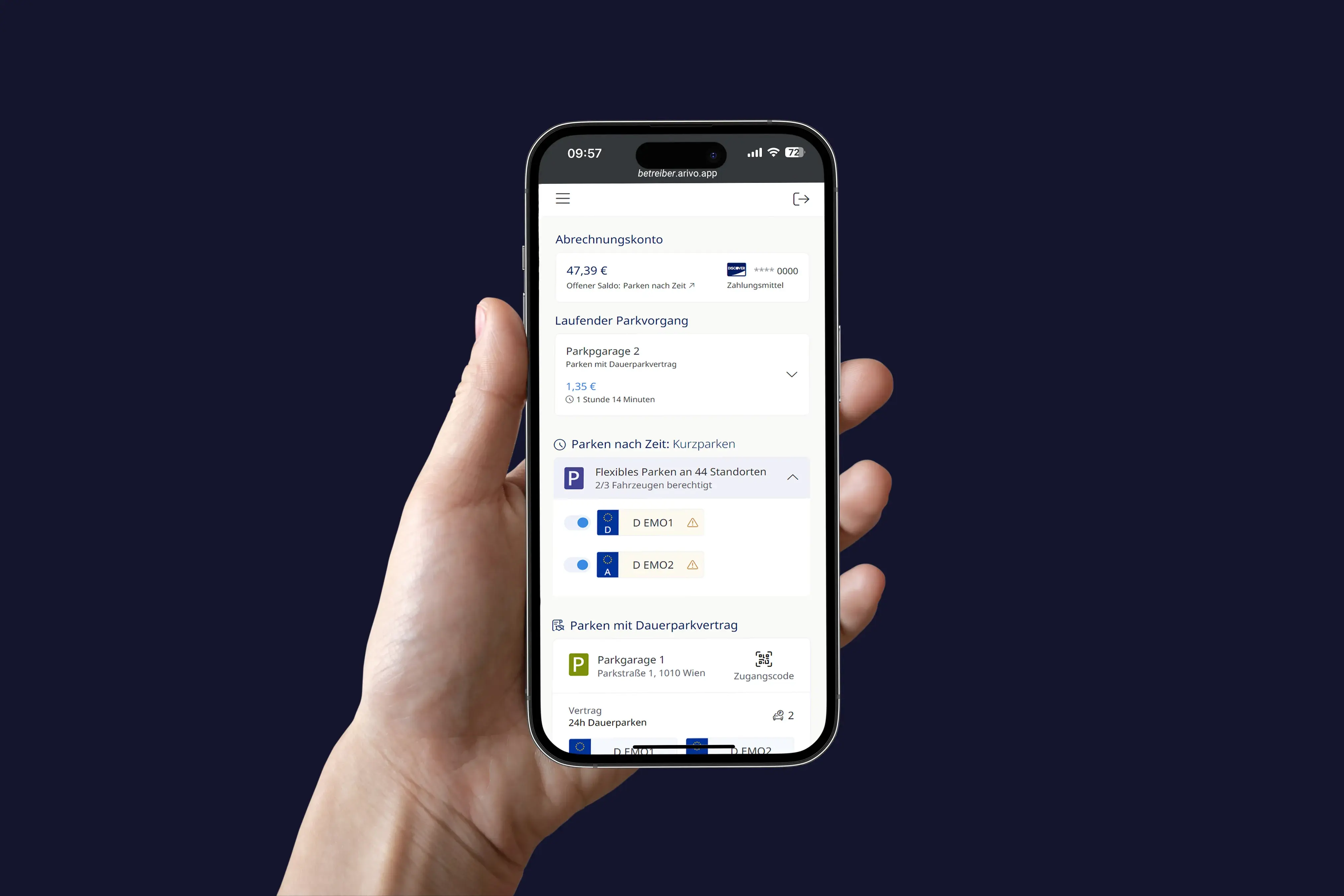
High occupancy isn’t down to luck: To run your car park efficiently over the long term and keep empty spaces to a minimum, you need more than just a good location – you need well‑targeted measures that fit your specific circumstances.
The secret lies in finding the right balance between pricing, tailored offers for different user groups, and making your car park visible – all aligned with your particular use case. In this blog, we’ll share tried‑and‑tested approaches that help reduce vacancy and keep your car park running at full potential.
Table of Contents
Measure 1: Identify the right base tariff
Measure 2: Offer time-based pricing
Measure 3: Introduce special tariffs and discounts
Measure 4: Provide long-term parking options
Measure 5: Build customer loyalty
Measure 6: Connect to parking apps
Measure 7: Use marketing and advertising effectively

Analyse before optimising
To meaningfully improve the utilisation of a car park, you first need to understand exactly how it’s being used. That starts with asking the right questions: What are the average and peak occupancy levels throughout the week and at different times of day? How many spaces are taken up by short‑stay visitors versus long‑term parkers? When is the site busiest, and when does it sit underused? Are there any clear patterns in behaviour?
You can only answer these questions with solid, reliable data. This requires a robust parking system – one that not only includes built‑in reporting tools but also consistently captures and provides all the key data you need. Only when these figures are presented in a clear, structured way can you properly analyse occupancy and create a strong foundation for effective optimisation.
Note: The Arivo Occupancy Report helps you get the most out of your car park by:
-
Clearly visualising peaks and low‑usage periods with easy‑to‑read heatmaps
-
Revealing patterns in how your spaces are used
-
Making it simple to compare different parking areas
-
Providing a solid foundation for planning tariffs, managing capacity, and implementing targeted improvements
Measure 1: Identify the right base tariff
One of the biggest levers for improving occupancy is your entry tariff – the base rate you start with. Set it deliberately low to lower the barrier for new customers, then gradually increase it over time. This not only encourages first‑time users to give your car park a try but also helps establish a strong foundation for consistent, long‑term occupancy.
When deciding on the right base rate, keep these factors in mind:
-
Location: Prime, central locations can usually justify higher pricing.
-
Competition: Review the pricing of nearby car parks and use it as a benchmark.
-
User groups: Understand who is using your facility and tailor your pricing to match their willingness to pay.
Tip: Boosting occupancy isn’t just about setting an attractive base rate. Clear signage, a straightforward parking system, and consistent communication – both online and offline – are equally important for drawing in more users.
Once your base rate is set, the next step is to monitor and fine‑tune it. By analysing occupancy data, you can see exactly how your pricing impacts usage. From there, you can gradually adjust rates – up or down – until you hit the sweet spot for optimal occupancy.

Further reading: Want to learn how to structure your parking tariffs effectively? Take a look at our step‑by‑step guide.
Not sure whether you need a barrier system to guarantee enough spaces for your long‑term parkers? Let’s figure it out together. Get in touch with Arivo today
Measure 2: Offer time-based pricing
Once you’ve set your base rate, it’s time to fine‑tune. Start by digging into your occupancy data: When is your car park at its busiest? Where do you regularly see empty spaces? Are there clear seasonal trends?
If you spot patterns, it can pay to introduce time‑based pricing, such as:
-
by time of day: for example, different rates for daytime and overnight parking
-
by day of the week: weekends versus weekdays
-
by season: adjusting prices for summer, winter, or off‑peak periods
Tip: Time‑based pricing works particularly well at locations with clear usage patterns. Tools like heatmaps, which show occupancy across days and times, make these patterns easy to spot and factor into your pricing decisions.
Adjusting your tariffs by time helps balance demand and maximise revenue. Higher prices during peak times or weekends can make the most of your capacity, while lower rates during quieter periods – like overnight or in the off‑season – help keep spaces filled.
Measure 3: Introduce special tariffs and discounts
If you want to manage your car park strategically, it’s not just about varying prices by time – you also need to think about your audience. By offering tailored discounts or special rates, you can appeal to different user groups, turning them into loyal customers and creating an additional revenue stream.
The key to this is understanding who your users are. That means taking a close look at the surrounding area – whether it’s nearby hotels, gyms, restaurants, or event venues – and creating offers that fit their needs. Done right, it’s a win‑win: customers enjoy attractive rates, while operators benefit from more predictable and consistent occupancy.
Example 1: Partnering with a gym ⬇️
If there’s a gym close to your car park, consider offering its members a discounted rate using solutions like Arivo Discount Management. These discounts can be redeemed easily – for example, with a QR code on their receipt or by entering their number plate at a discount tablet inside the gym.
Beispiel 2: Reserving spaces for hotel guests ⬇️
Hotels with limited parking can also benefit from solutions like the Arivo Hotel App. This allows operators to allocate a set number of spaces to nearby hotels, enabling hotel staff to grant parking permissions directly to guests – with no extra admin hassle.
Looking to reduce manual work and fully digitise your parking system? Contact Arivo now
Measure 4: Provide long-term parking options
Long‑term parking options can be a smart way to optimise occupancy even further. If certain spaces regularly sit empty at specific times, why not make them available to long‑term users? Time‑restricted long‑term access works especially well, helping to fill those gaps with the right customers.
Here are three examples of how this can work in practice:
- Downtown Shopping Center:
⚠️ The challenge: The parking lot is well used during store hours, with plenty of shoppers coming and going. But after closing time, the spaces often sit empty — even though parking demand in the city center remains high.
✅ The solution: Local residents can park overnight at discounted rates, for example between 8:00 PM and 8:00 AM. Standard short-term parking rates still apply during business hours. -
Offfice Building in Mixed-Use Areas:
⚠️ The challenge: Employees use the on-site parking during the day, but after office hours, the spaces go unused, despite high parking demand from local residents.
✅ The solution: Offer evening and overnight parking passes to local residents, allowing the spaces to be used outside of business hours. - Event Venue Parking Garage:
⚠️ The challenge: On event days, like concerts or game nights, the garage fills up quickly. But on days without events, occupancy drops significantly.
✅ The solution: Offer discounted long-term parking contracts for nearby residents or businesses, valid on non-event days. Regular event pricing still applies whenever there's an event.
Arivo brings all of this together in the Arivo Customer Portal and Arivo Customer Management, giving operators an efficient, transparent, and user‑friendly way to manage long‑term parking. Get in touch with Arivo to find out more
Measure 5: Build customer loyalty
Many people park once – and never return. But this group holds real potential. If you can turn one‑time, anonymous short‑stay users into regular customers, you’ll create a far more stable and predictable occupancy level. One of the best ways to do this? A customer portal.
So how do you get people to sign up?
Most users are happy to create another account – as long as the benefits are clear. The key is to communicate the value up front and make the parking experience as simple and intuitive as possible. Once they’ve had a smooth, positive experience, they’re far more likely to come back – often without even thinking about it.

The Arivo Customer Portal makes signing up quick and easy, streamlining the entire parking process for both users and operators.
For parkers it offers:
- Quick, self‑service management of personal details, number plates, and payment methods
- The ability to purchase and instantly use long‑term parking contracts 24/7
- Automatic billing of parking fees via their stored payment method
- One account for easy short‑stay parking across all the operator’s car parks
For operators, it delivers:
- 24/7 sales of long‑term parking contracts
- Automated processing of parking fee
- A lighter workload for customer service by eliminating manual updates and issuing of parking cards
- Stronger customer loyalty through portal registration
Tip: Make registration impossible to miss. Use clear on‑site signage and proactively inform your existing customers – for example, through newsletters – to boost sign‑up rates.
WIPARK faced a familiar challenge: turning one‑time parkers into loyal customers. To meet rising expectations for efficiency, user‑friendliness, and flexibility, Vienna’s oldest parking operator introduced the Arivo Customer Management system and Customer Portal. The results speak for themselves: a 70% increase in their customer base in just three months.
Before:
➡️ Customer service processes were heavily manual
➡️ Long‑term parking contracts could only be arranged by hand and at limited times
➡️ Billing was done manually
➡️ Cancellations required manual processing
After:
➡️ Parkers can register online in minutes – even after entering the car park
➡️ Long‑term parking spaces are available to book online at any time
➡️ Users can manage their own details (number plates, personal data, payment methods)
➡️ Billing is fully automated through stored payment methods
➡️ Automated workflows significantly reduce the burden on customer service teams
Bonus: Thanks to the clean, intuitive interface, drop‑off rates during registration are exceptionally low.
Measure 6: Connect to parking apps
For many drivers, short‑stay parking apps are already part of everyday life. They make it simple to find, book, and pay for parking directly from a smartphone. Connecting your car park to these apps is a smart way to reach new customers.
For parkers, it means a faster, more convenient experience – they can find and use parking spaces in an app they already trust, with quick, hassle‑free payment.
For operators, it means greater visibility across multiple platforms. Being listed in well‑known apps also lowers the barrier for new users to choose your car park.
Tip: Integrate parking apps like EasyPark and Parkster as early as possible. This ensures your car park is visible from day one and instantly accessible to a large pool of potential customers.
Measure 7: Use marketing and advertising effectively
Even the best car park will stay empty if nobody knows about it. That’s why visibility is crucial – not only to attract new customers but also to keep existing ones coming back. A smart mix of offline and online communication always pays off, and it’s especially important when launching a new car park.
How can you get your car park noticed?
- Be visible on‑site: Clear, well‑placed signage on and around your site makes it easy for drivers to spot. Flyers can be distributed to nearby businesses like restaurants, hotels, gyms, or offices, while direct mail to local residents can help build awareness in the community.
Be careful: Always check the legal requirements for direct mail campaigns beforehand to avoid any issues.
-
Strengthen your online presence: Make sure your car park is listed on short‑stay apps and maintain an up‑to‑date Google My Business profile. If you have a website, include clear information about your location, pricing, and how to use the facility. Social media can also be a powerful way to increase your visibility and connect with customers.
Engaging with feedback and reviews shows users you’re listening. It also helps you identify opportunities for improvement and act on them quickly.
- For existing parking sites: Keep your customer base informed. Send regular emails to let them know about new locations, pricing updates, or special offers – it’s a simple way to keep them engaged and coming back.
Conclusion
There’s no one‑size‑fits‑all solution for achieving optimal car park occupancy. Success comes from creating a tailored mix of pricing, targeted offers for different user groups, and strong visibility – all adapted to the specific needs and context of your car park.
The key is to recognise usage patterns and respond strategically – whether that’s through adjusting your tariffs or integrating long‑term parking options. By staying flexible and making data‑driven decisions, you can build a solid foundation for long‑term, stable occupancy.
After all, successful car park management isn’t about adding more spaces – it’s about making the most of the ones you already have.
Looking to manage your car parks more efficiently and digitally? Get in touch – we’ll work with you to find the perfect solution for your needs. Contact Arivo today



